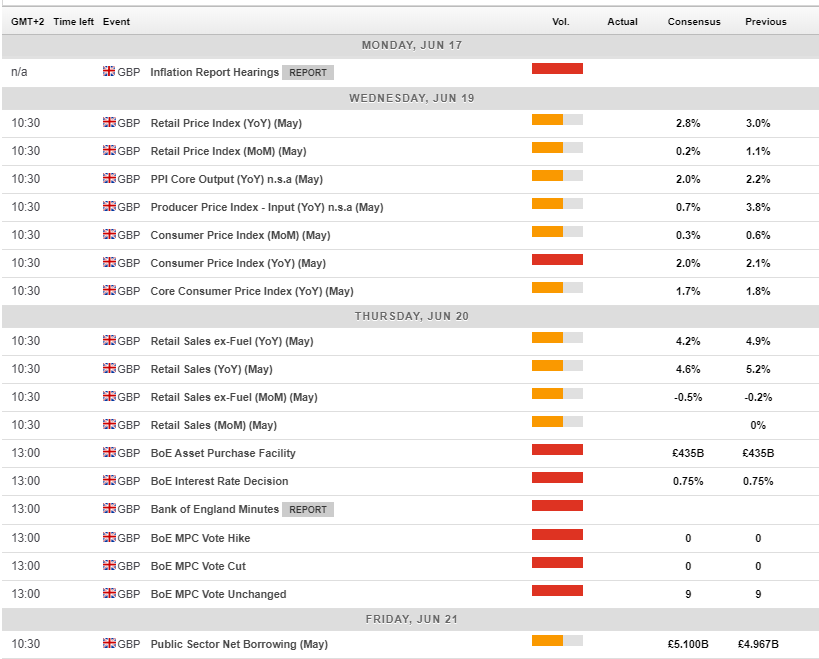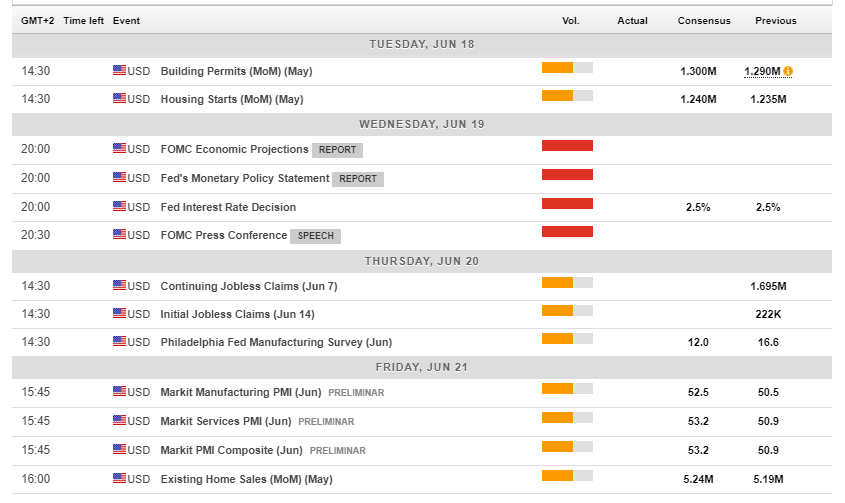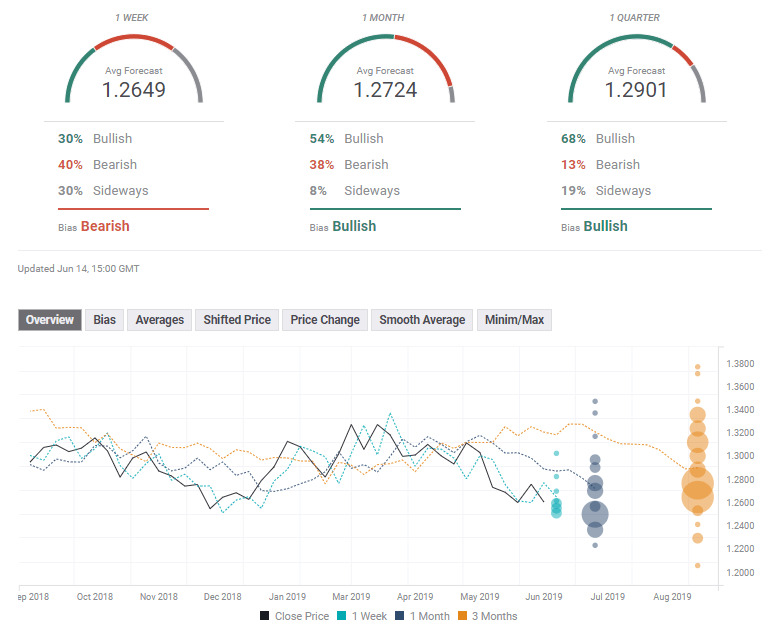- GBP/USD has been falling as the USD resumed its gains.
- The Bank of England’s decision, further rounds of the Conservative Contest and the Fed stand out.
- The daily chart for the third week of June remains bearish.
- The FX Poll points to falls in the short term and rises afterward.
What just happened: Bracing for Boris, USD strength
Boris Johnson has one foot at 10 Downing Street. The former foreign secretary has overwhelmingly won the first round of the Conservative Party’s leadership contest with 114 votes, leaving his closest competitors far behind. He is all-but-certain to be on the shortlist that the party’s membership will vote on – and he is very popular among members.
In his launch event, Johnson has said the UK must leave the EU by the October 31st deadline. On the other hand, he has refused to commit to stepping down if he does not deliver Brexit on time.
See Boris Johnson launch analysis: Three statements that may lift GBP/USD
In the meantime, the UK economy has been struggling according to the latest data. GDP fell by 0.4% in April – the month after the country was supposed to leave the EU. Economists are unsure if the downturn is temporary or just a response to March’s stockpiling.
On the other hand, the unemployment rate has remained at the historic low of 3.8%, and wage growth came out at 3.1% – above expectations. Bank of England Governor Mark Carney has refrained from talking about monetary policy in his speech.
US data has been mixed as well. Inflation fell short of expectations in May with core consumer prices rising by only 2% year on year. On the other hand, retail sales not only beat expectations in May but also enjoyed substantial upwards revisions for April – casting doubts on far the Fed may go with signaling interest rate cuts.
US-Sino trade wars have intensified with China saying it will “fight until the end” and US officials threatening new tariffs on the world’s second-largest economy if President Xi Jinping does not meet his American counterpart, Donald Trump.
UK events: BOE and the Conservative Contest
The Tories will hold additional leadership votes in parliament on Tuesday, Wednesday, and Thursday. After three members have been eliminated in the first round and one stepped down afterward, five contenders will compete for the second place behind Johnson. If foreign secretary Jeremy Hunt or his colleague Rory Stewart gain ground – the pound may gain – as they prefer softer versions of Brexit.
If hardliners such as Dominic Raab receive support – the pound may fall. Michael Gove and Sajid Javid are somewhere in the middle. According to party rules, the member with the fewest votes and those who receive fewer than 34 votes in these rounds are eliminated.
BOE Governor Carney will have two opportunities to move the pound. He first appears before a parliament committee on Monday and will shed some light on the bank’s recent inflation report and its general views about the economy. Carney is likely to stress that the BOE is assuming a smooth Brexit and intends to raise interest rates in response to rising inflation – markets price in a hike only in mid-2020.
Inflation figures are scheduled for Tuesday. Headline consumer price index is forecast to slide from 2.1% to 2.0% year on year. Core prices are projected to suffer a similar decline from 1.8% to 1.7%. A steeper fall in inflation may push back
Retail sales are due on Thursday – just before the rate decision. The volume of sales remained flat in April while core sales fell by 0.2%.
BOE Preview
Carney’s second influence on the pound is more significant. The BOE is set to leave the interest rate unchanged at 0.75%. As mentioned earlier, the central bank has expressed its desire to raise rates – but then there’s Brexit. The rising uncertainty about the UK’s exit from the EU is casting a shadow on future policy.
The “Old Lady” assumes a smooth Brexit, despite Johnson opening the door to a no-deal Brexit. Will the BOE change its assumptions? Probably not, as it would draw criticism – the BOE has already been criticized as a doomsayer ahead of the 2016 EU Referendum. However, the accompanying meeting minutes may express more concern about future growth – due to Brexit and global trade tensions.
And if inflation falls more than expected, the BOE may lean on weaker price rises to hint it will push back its intentions to raise rates. Other central banks have already turned dovish, and the BOE may follow them. The ECB has pushed back its rate hike intentions to mid-2020, and some consider a rate cut. The Fed – making its decision on the previous day – is also likely to lean towards cuts.
If the BOE removes its hawkish bias, the pound may fall.
Here are the events lined up in the UK on the forex calendar:

US events: All eyes on the Fed
The Federal Reserve’s decision is left, right, and center. The central bank is set to leave interest rates unchanged but is under heavy pressure to cut rates later this year. Bond markets are foreseeing two slashes – the first coming in July. The latest jobs report, and inflation have come out below expectations and the ongoing trade war with China clouds the outlook. On the other hand, some data points, such as the retail sales figures have been upbeat.
Markets will first observe the Fed’s projections for interest rates in the “dot-plot.” If the central bank aligns with markets and projects two cuts this year, the dollar may fall. If it only signals one cut, the greenback may have room to rise.
Investors will carefully scrutinize the statement and Fed Chair Jerome Powell’s words at the press conference. Remarks about inflation, employment, and interest rates are of high importance.
See the full preview Five factors that will rock USD in a critical decision
Apart from the Fed, housing data on Tuesday may have an impact only if they both surprise in the same direction – the figures often offset each other. Thursday’s numbers will likely be overshadowed by the Fed, while Markit’s forward-looking purchasing managers’ indices on Friday may already move the market a bit further.
All in all, the Fed decision is central to USD price action.
Here are the scheduled events in the US:

GBP/USD Technical Analysis
GBP/USD remains under pressure, but this pressure may be somewhat easing – at least when observing momentum on the daily chart. The Relative Strength Index continues pointing to falls but remains above 30 – not indicating oversold conditions. The currency pair remains far below the 50, 100, and 200 Simple Moving Averages.
Some support awaits at 1.2605, which was an initial low in late May. The four-month low of 1.2558 is another robust line of support. 1.2475 provided support in December, and 1.2445 was the flash-crash low at the wake of the new year.
Initial resistance is at 1.2650 which worked as a support line in June. It is followed by 1.2765 that was a double-top around the same time. Further up, 1.2815 was a swing high in May, 1.2870 was April’s low, and 1.2960 was a support line in both May and March.
GBP/USD Sentiment
Boris Johnson will likely continue flashing his Brexit credentials and weigh on the pound. The Bank of England may find it hard to remain optimistic after weak GDP data, and the Fed may not go far enough for markets. All in all, there is more room to the downside than to the upside.
The FXStreet Poll shows a bearish bias in the short term but a bullish sentiment afterward with rising targets. The average objectives have all been downgraded in comparison to recent weeks. Experts may be bracing for a Boris-Brexit.

Related Forecasts
Get the 5 most predictable currency pairs

